Family : Scombridae

Text © Giuseppe Mazza

English translation by Mario Beltramini
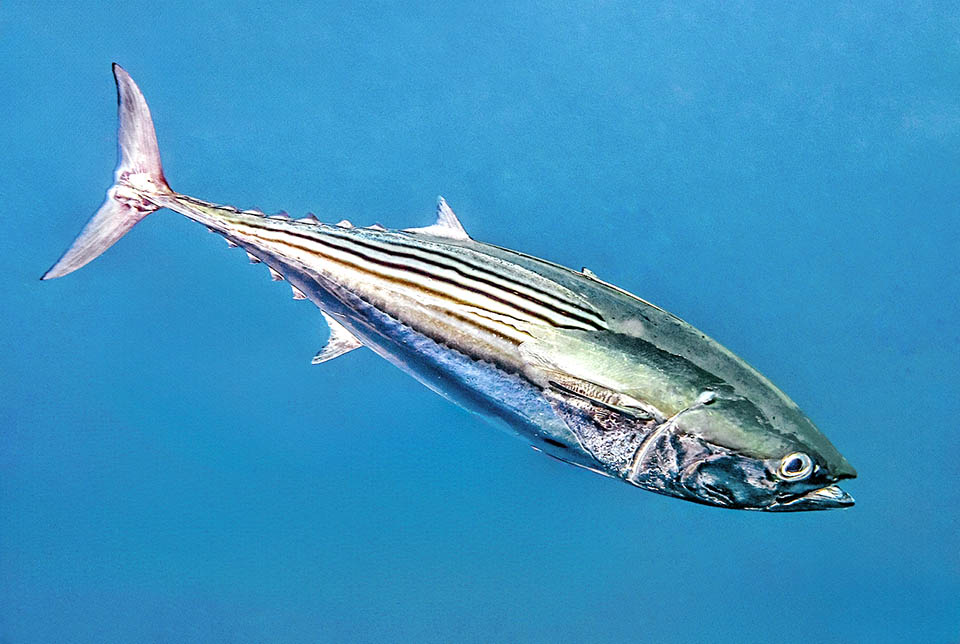
Characterized by 3-5 black horizontal stripes in the upper part of the body, the Black skipjack (Euthynnus lineatus), lives in West pacific, from California to Peru © www.carlosestape.photoshelter.com
Euthynnus lineatus Kishinouye, 1920, commonly known as Black skipjack because of its livery and the modest size if compared with species such as Thunnus thynnus, belongs to the class of theAc tinopterygii, the ray-finned fish, to the order of Perciformes and to the family of Scombridae, which gets the name from the well known Mackerel (Scomber scombrus) and counts 15 genera and 54 species.
The genus Euthynnus originates formed by the Greek “eu”, good, and “thynnos”, tuna, to reminds us that despite the size it has all tuna characteristics , whilst the specific term lineatus, with some lines in Latin, refers to the typical horizontal black stripesin th e upper part of the body.
Zoogeography
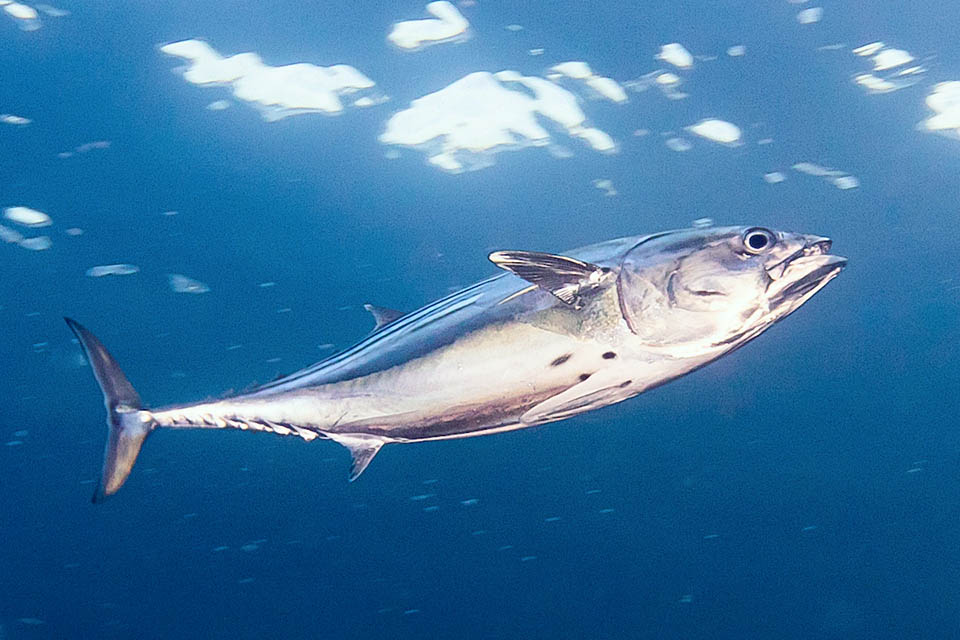
Can reach 84 cm but does not exceed 60. The pectorals are of modest size and the belly is clear, often with black spots over the pelvic fins © www.carlosestape.photoshelter.com
Euthynnus lineatus lives in the eastern Pacific, from the coasts of California up to Peru. It is present up to the Galapagos and two specimens have been seized in the Hawaiian islands.
Ecology-Habitat
The Black skipjack is an oceanic pelagic oceanodromous fish that moves in schools usually on the surface, in the first 40 m of water, at temperatures included between 21,3 and 28,6 °C.
Morphophysiology
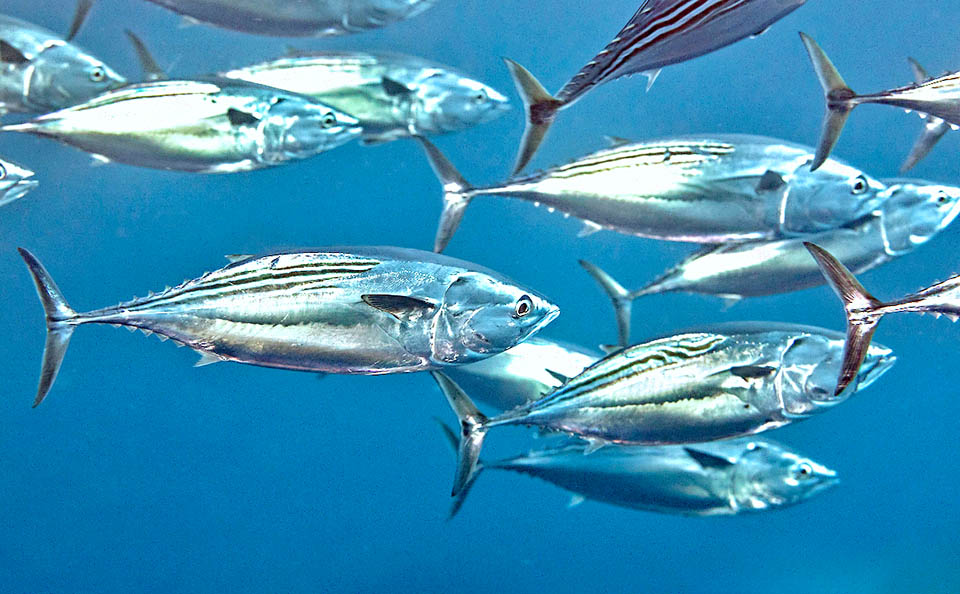
The scales, big and thick, form a corset in the fore part of the fish. For the rest the body is naked, apart from the lateral line synchronizing the movements in the schools © www.carlosestape.photoshelter.com
Even if the normal size is about 60 cm, Euthynnus lineatus can reach 84 cm with a published maximum weight of 9,1 kg.
The scales, large and thick, form a sort of corset in the fore part of the fish. For the rest the body is naked, apart from the lateral line, essential for synchronizing the movement in the schools.
The swim bladder is absent and at the base of the tail we note two small keels separated by a bigger one.
The profile of the head is regular, the jaws have thin conical teeth and on the tongue we note two cartilaginous crests.
There are 2 dorsal fins separated by a short space.
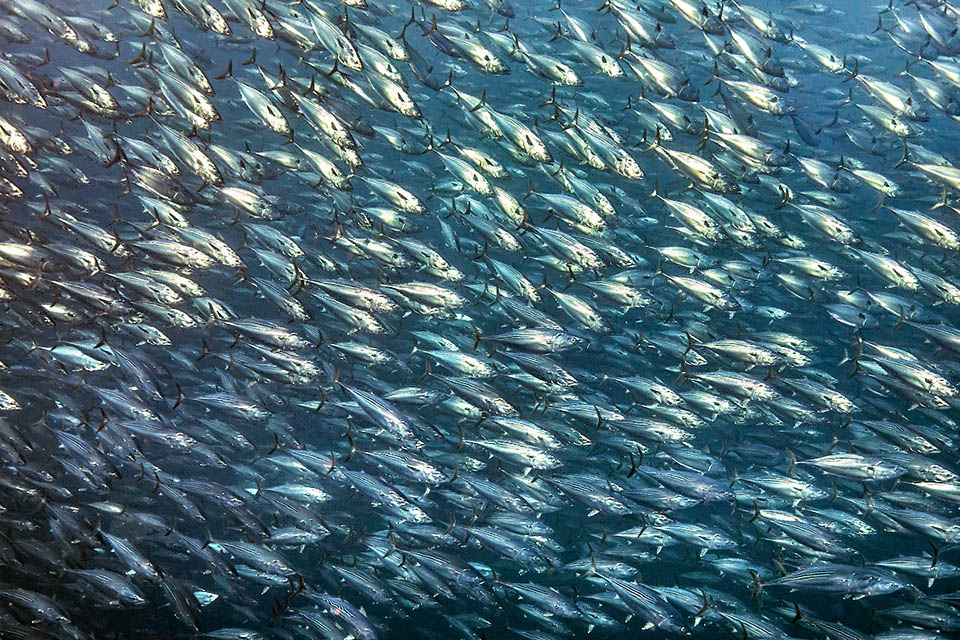
These, mixed sometimes with other species, are often impressive. Euthynnus lineatus feeds mainly on fish, but also on mollusks, crustaceans and zooplankton © www.carlosestape.photoshelter.com
The first, pointed with a lobe in the fore part, has 10-15 spiny rays and the second, lobed too, is similar to the anal and counts 11-12 soft rays.
The pectoral fins are small and towards the tail we note, in a saw-like manner, 8-10 pinnules above and 6-8 below. The caudal fin is more or less forked.
In its whole the livery is iridescent blue, with 3-5 characteristic horizontal black stripes in the upper part.
Above the pelvic fins the belly has some black dots. They may be missing altogether or merged to form a horizontal band.
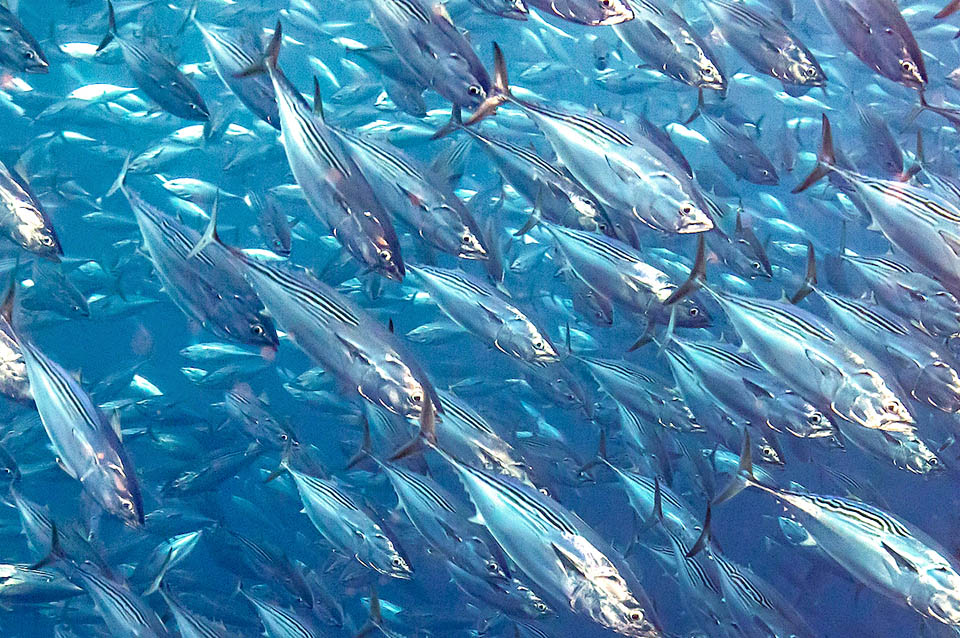
Reproduction may occur all year round with eggs entrusted to the currents. The larvae need high temperatures and do not go beyond 400 km from the continent © www.carlosestape.photoshelter.com
Unlike what generally happens with the Scombridae, there is no sexual dimorphism.
Like the Shortfin mako shark (Isurus oxyrinchus) the big specimens of Euthynnus lineatus have a particular muscular system that can slightly increase the body temperature compared to the sea one. This small thermal increase allows strong accelerations, improving in the meantime the vision and the work of the brain.
Ethology-Reproductive Biology
Euthynnus lineatus is an opportunistic species feeding mainly on fish, but also on mollusks, crustaceans and zooplankton.
Often hunts in schools mixed with the Yellowfin tuna (Thunnus albacares) and Katsuwonus pelamis and reproduces all year round with eggs entrusted to the currents. The larvae and the juveniles need temperatures over 26 °C and are never found at more than 400 km from the continent.
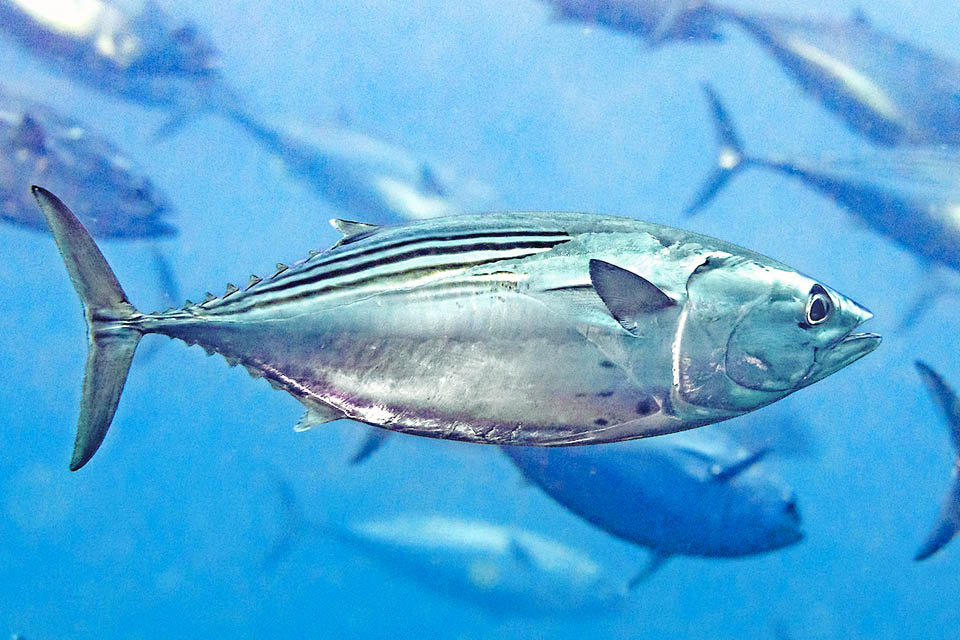
Euthynnus lineatus is preyed upon by the big fishes, especially sharks, and by the sport fishermen, but populations are stable and is not an endangered species © www.carlosestape.photoshelter.com
Euthynnus lineatus is mainly preyed upon by the sharks, by the Yellowfin tuna (Thunnus albacares), the Striped marlin (Kajikia audax) the Atlantic blue marlin (Makaira nigricans) and by the Indo-Pacific sailfish
(Istiophorus platypterus), not to forget by the sport fishermen and the captures with purse seine nets.
The resilience of this species is average, with a minimum time of doubling the populations of 1,4-4,4 years, and the fishing vulnerability relatively high, marks 57 on a scale of 100.
The populations are however stable and since 2022 Euthynnus lineatus appears as “LC, Least Concern”, in the IUCN Red List of the endangered species.
→ For general information about FISH please click here.
→ For general information about BONY FISH please click here
→ For general information about CARTILAGINOUS FISH please click here.
→ To appreciate the BIODIVERSITY of BONY FISH please click here.
→ To appreciate the BIODIVERSITY of CARTILAGINOUS FISH please click here.
